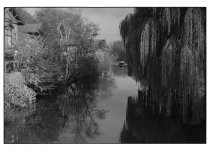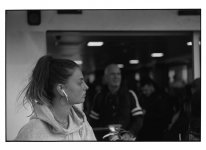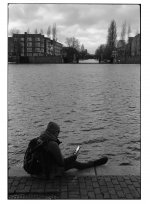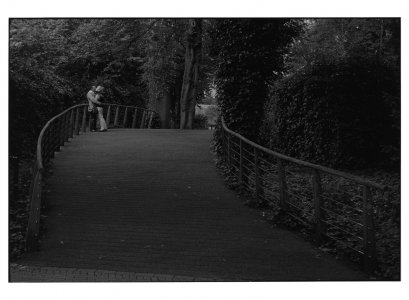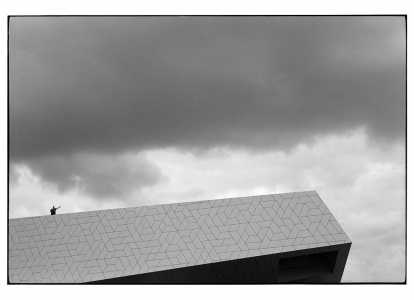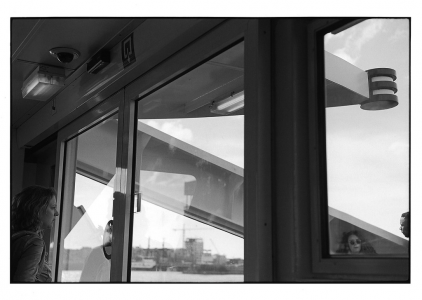Erik van Straten
Mentor
Erik van Straten
Mentor
Godfrey
somewhat colored
Erik van Straten
Mentor
Godfrey
somewhat colored
Erik van Straten
Mentor
Godfrey, the Color Skopar 50mm f2.5 seems to vignette on the M10. Or is it the shade?
Erik.
Erik.
Godfrey
somewhat colored
I was using only the short default shade, not the deep shade, so that isn't a factor. Most of the vignetting is from my rendering ... I often add some vignetting and otherwise manipulate the illumination across the field of view for a given scene to help direct the eye in a quiet way to what I am intending for the photograph.Godfrey, the Color Skopar 50mm f2.5 seems to vignette on the M10. Or is it the shade?
But the question piqued my curiosity as I hadn't specifically tested for the CS50 falloff on the M10-M body. So I pulled out a tripod and the CS50, as well as the Summicron-M 50, to do a quick'n'dirty falloff test ...

Color-Skopar 50/2.5 vs Summicron-M 50/2 : Fall-off
Leica M10 Monochrom
ISO 400, EV +1, Aperture priority, raw capture
No editing
From this test, I can see that from wide open to minimum aperture, the behavior of the two lenses is pretty closely matched for falloff, regardless whether the Summicron-M 50mm lens profile is enabled or not. I can also see that the Color-Skopar 50 tends to incite the M10-M light meter to set exposure about a half-stop down from the Summicron-M 50.
Since I'm of the camp that tends to set 2-stops-down-from-wide-open for most of my photographs, closing down further or opening up wider either for effect or due to lighting dynamics of a specific scene, I'd say that the Color-Skopar 50/2.5 does not exhibit more than a minor amount more falloff than my other 50mm lenses in general use.
G
Erik van Straten
Mentor
I think when printing analogue the light falloff disappears in part because the enlarger produces light falloff too!
Erik.
Erik.
Duofold RF
Well-known
How these two light falloffs are cancelled each other? Does enlarger lens produce the fall off similar to the lens? is this should add more falloff? ThanksI think when printing analogue the light falloff disappears in part because the enlarger produces light falloff too!
Erik.
Erik van Straten
Mentor
The lens of the camera vignettes, but the lens of the enlarger vignettes too, so the vignetting of the enlarger cancels out the vignetting of the camera. Positive/negative.
Erik.
Erik.
Evergreen States
Pierre Saget (they/them)
I'd never thought of this but it makes sense. With a negative image, light becomes dark and dark becomes light. When the light from the enlarger passes through, the vignetting from its lens darkens the parts of the negative where the taking lens vignetting made the image brighter. When it's projected onto paper in a positive image, it has the effect of brightening the vignetted corners. Brilliant!The lens of the camera vignettes, but the lens of the enlarger vignettes too, so the vignetting of the enlarger cancels out the vignetting of the camera. Positive/negative.
Erik.
Godfrey
somewhat colored
It's been too long for me to remember the details, honestly, but I know that my rendering notions for printing changed a lot when I went to all-inkjet printing. A lot of what I reach for when rendering now was either a part of the materials' nature when I printed in the wet lab, or actually go in the other direction due to the different nature of an inkjet printer engine.I think when printing analogue the light falloff disappears in part because the enlarger produces light falloff too!
The end goal, of course, is a satisfying print no matter how you produce it, and I know for a fact that I'm much more proficient in image processing than I was as a wet lab printer. It's a different skill set.
G
Erik van Straten
Mentor
To my taste the shots of Godfrey above have too much light fall off. It immediately stands out. I guess this effect is easy to remove in Photoshop.
A shot made with a Leitz Summicron 50mm f2 collapsible at full aperture and enlarged with a Leitz Focomat llc has quite a lot of vignetting too.
gelatin silver print (summicron 50mm f2 collapsible) leica m3
Erik.
View attachment 4816607
A shot made with a Leitz Summicron 50mm f2 collapsible at full aperture and enlarged with a Leitz Focomat llc has quite a lot of vignetting too.
gelatin silver print (summicron 50mm f2 collapsible) leica m3
Erik.
View attachment 4816607
Duofold RF
Well-known
Got it, it is the negative film showed more translucency around the corners and the enlarger lens pass less light around the cornersThe lens of the camera vignettes, but the lens of the enlarger vignettes too, so the vignetting of the enlarger cancels out the vignetting of the camera. Positive/negative.
Erik.
Godfrey
somewhat colored
Which shots are you referring to, the test exposures or the photograph of the skeleton reposing in a front yard? The latter is a rendered interpretation—whether you like it or not is purely a matter of personal preference. The former are unedited and display what the lenses produce...To my taste the shots of Godfrey above have too much light fall off. It immediately stands out. I guess this effect is easy to remove in Photoshop.
I do tend to like a little bit of vignetting, but how much depends on the particular photograph and what I'm intending with the rendering. I adjust it when I'm editing.
Lenses produce what they produce. And yes: light fall-off is easily adjusted in image processing, with any number of image processing applications (not just Photoshop). I haven't used Photoshop in nearly a decade now.
G
Erik van Straten
Mentor
Erik van Straten
Mentor
Godfrey
somewhat colored
Sheesh, just saw this thread again ... since February! Yike.
Really like this last photo, Erik.
And yes, sometimes I like a lot of vignetting, other times not. I often add a little...
G
Really like this last photo, Erik.
And yes, sometimes I like a lot of vignetting, other times not. I often add a little...
G
Erik van Straten
Mentor
Bingley
Mentor
Very nice, Erik. I’m having a hard time seeing any difference in rendering or sharpness between the Skopar and Rigid ‘Chron.
Share:
-
This site uses cookies to help personalise content, tailor your experience and to keep you logged in if you register.
By continuing to use this site, you are consenting to our use of cookies.


